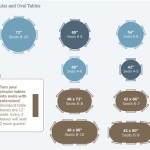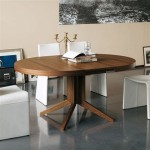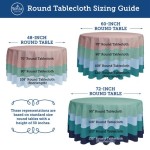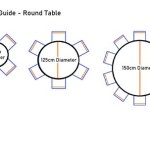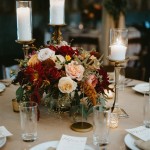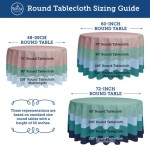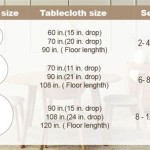How To Fold Tablecloths For Weddings: A Comprehensive Guide
Tablecloths play a significant role in wedding décor, contributing to the overall aesthetic and ambiance of the event. Properly folded tablecloths enhance the presentation and ensure a smooth setup process. Different folding techniques are suitable for various tablecloth sizes, materials, and storage requirements. This guide provides a detailed overview of several methods for folding tablecloths for weddings, emphasizing efficiency and elegant presentation.
Key Point 1: Essential Preparations Before Folding
Before initiating any folding technique, proper preparation is crucial. This involves ensuring the tablecloth is clean, ironed, and free of any visible wrinkles or stains. A well-prepared tablecloth will result in a neater and more professional final fold.
Firstly, the tablecloth should be freshly laundered. Even if the tablecloth appears clean, unseen dirt or microscopic particles can compromise its appearance under bright lighting or when viewed closely. Washing the tablecloth according to the fabric's care instructions is essential. Stains should be pre-treated and removed before the washing cycle to prevent them from setting.
Once washed, the tablecloth should be thoroughly dried. Over-drying can lead to wrinkles, so it's generally recommended to remove the tablecloth from the dryer while it's still slightly damp. This makes ironing easier and reduces the risk of damage due to excessive heat.
Ironing is a critical step. A high-quality iron with adjustable temperature settings is recommended. Before ironing, identify the fabric composition of the tablecloth (e.g., linen, cotton, polyester). Use the appropriate heat setting to avoid scorching or damaging the material. A pressing cloth can offer added protection, particularly for delicate fabrics. Iron the tablecloth in sections, focusing on eliminating any creases or wrinkles. Ensure all edges are neatly ironed to create a sharp, clean look.
Finally, prepare a clean, flat surface for folding. A large table or counter is ideal. Ensure the surface is free from any objects that could potentially snag or stain the tablecloth. This dedicated space will allow for efficient and precise folding.
Key Point 2: Detailed Folding Techniques for Square and Rectangular Tablecloths
Several folding techniques can be employed, each offering a unique way to present and store the tablecloth. The choice depends on the tablecloth's size, material, and available storage space. Here are detailed instructions for some common methods:
The Classic Fold (Square Tablecloth): This method is simple and efficient, suitable for both square and rectangular tablecloths. First, lay the tablecloth flat on the prepared surface. Fold it in half lengthwise, ensuring the edges align perfectly. Next, fold it in half widthwise, again aligning the edges. Repeat the folding process lengthwise and widthwise until the desired size is achieved. This method creates a compact, easily stackable square or rectangle.
The Roll Fold (Rectangular Tablecloth): This technique minimizes wrinkles and is ideal for delicate fabrics. Lay the tablecloth flat and smooth out any wrinkles. Fold it in half lengthwise. Then, starting from one end, tightly roll the tablecloth. This method prevents sharp creases, making it particularly suitable for fabrics like linen that are prone to wrinkling. The rolled tablecloth can then be stored horizontally or vertically, depending on space constraints.
The Professional Fold (Square Tablecloth): This is a more elaborate fold often used in formal settings. Lay the tablecloth flat and fold it in half lengthwise, then in half widthwise. This creates a smaller square. Next, pick up one corner of the top layer and fold it diagonally to the center. Repeat this process with the remaining three corners, creating a smaller square with four triangular flaps. This fold is visually appealing and adds a touch of elegance.
The Pocket Fold (Rectangular Tablecloth): This method is useful for incorporating a menu or small decorative element into the fold. Lay the tablecloth flat and fold it in half lengthwise. Then fold it in half widthwise. Next, fold one end upwards about one-third of the way. This creates a pocket or flap. The menu or decorative element can then be inserted into this pocket, creating a neat and functional presentation.
The Accordion Fold (Square or Rectangular Tablecloth): This technique is visually appealing and creates a textured look. Lay the tablecloth flat and start by folding a narrow strip (approximately 2-3 inches) from one edge. Then, fold the strip back on itself, creating an accordion-like pleat. Continue this process across the entire width or length of the tablecloth. The resulting folded tablecloth will have a layered, textured appearance. This method is particularly suitable for displaying tablecloths at a wedding expo or trade show.
Key Point 3: Storage and Transportation Considerations
Proper storage and transportation are essential to maintain the integrity of the folded tablecloths. Improper handling can lead to wrinkles, stains, or damage, undermining all the previous efforts.
Following the folding process, store the tablecloths in a clean, dry environment. Avoid damp or humid areas, as moisture can lead to mildew or discoloration. A linen closet or storage container is ideal. If using a storage container, ensure it's clean and free of any sharp edges that could snag the fabric.
Consider using acid-free tissue paper to protect the tablecloths. Place a sheet of tissue paper between each folded layer to prevent wrinkles and abrasion. This is particularly important for delicate fabrics or tablecloths with intricate embroidery or embellishments.
When transporting the tablecloths, use a suitable carrying case or garment bag. Avoid packing them too tightly, as this can cause wrinkles. If transporting a large quantity of tablecloths, consider using individual garment bags to prevent them from shifting during transit.
For long-distance transportation, such as shipping tablecloths to a destination wedding, vacuum-sealed bags can minimize space and prevent wrinkles. However, it's essential to remove the tablecloths from the vacuum-sealed bags immediately upon arrival to allow them to regain their shape and prevent permanent creases.
Labeling the storage containers or garment bags is crucial, especially when dealing with multiple tablecloths of different sizes or materials. Use clear, concise labels that indicate the tablecloth's size, shape, and material. This will facilitate easy identification and prevent confusion during setup.
Finally, consider the on-site storage arrangements at the wedding venue. Ensure there is a designated area for storing the tablecloths that is clean, dry, and easily accessible to the setup team. Communicating with the venue coordinator regarding storage requirements is essential to ensure a smooth and efficient setup process.
By adhering to these detailed instructions for preparing, folding, storing, and transporting tablecloths, individuals involved in wedding planning and execution can contribute significantly to the event's overall success. The attention to detail in tablecloth presentation reflects a commitment to quality and enhances the aesthetic appeal of the wedding décor.

Folding Rectangular Tablecloths Storage Tips Cv Linens

Folding Rectangular Tablecloths Storage Tips Cv Linens

5 Ways To Fold Napkins At Your Wedding Luna Events Event Supplies

How To Fold A Tablecloth Reduce Wrinkles Totally Promotional

Folding Rectangular Tablecloths Storage Tips Cv Linens

Tuxedo Napkin Fold An Elegant Dining Touch Cv Linens

Linen Dos And Don Ts Essential Tips For Flawless Wedding Décor I Do Linens

Guide On How To Get Wrinkles Out Of Tablecloths Cv Linens

Dress Up With White Banquet Tablecloths In Affordable Ways Cv Linens

Wedding Linen Als Tips For Choosing The Perfect Tablecloths Napkins
Related Posts

